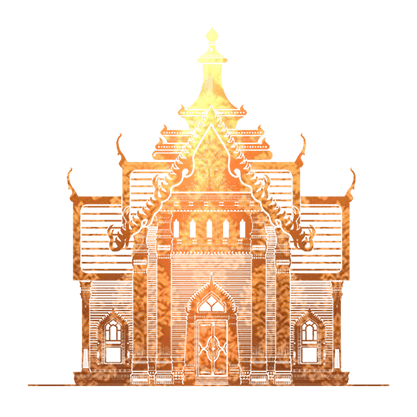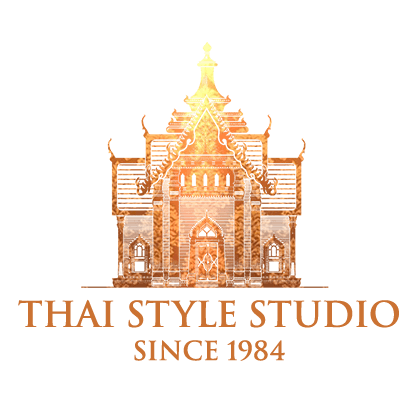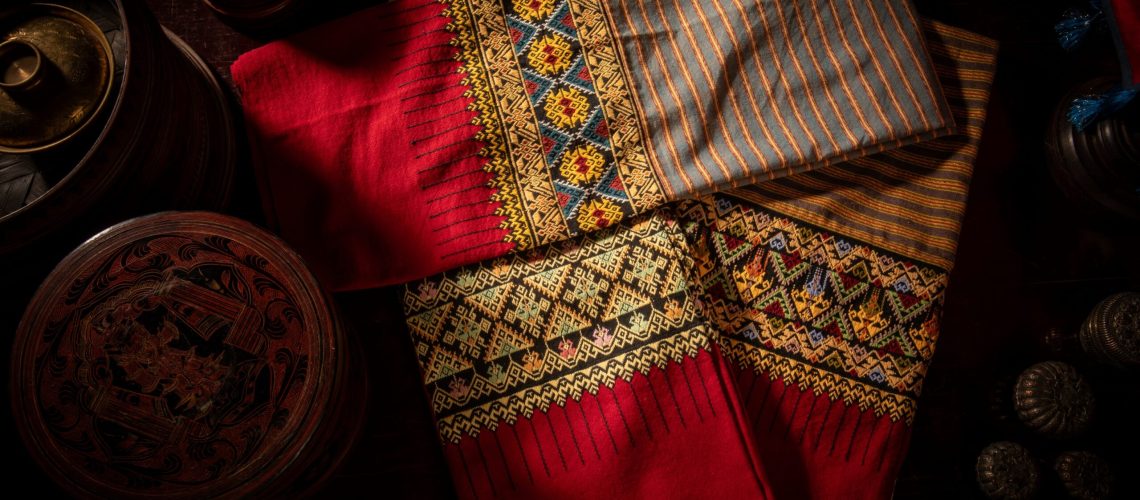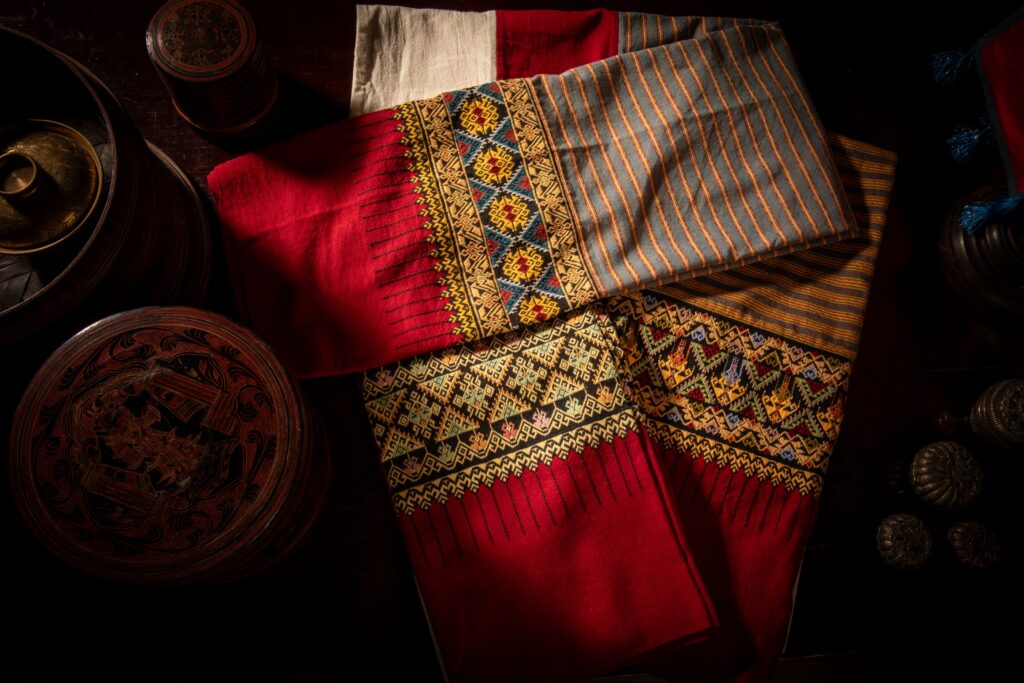
“Long Li’s Tin Jok” is an ancient textile featuring the distinctive “Jok” pattern from the Long Li community, which traces its roots back to the Tai Yuan people. This fabric is renowned for its unique patterns and vibrant colors, making it a cherished cultural heritage that the people of Lamphun take great pride in.“A unique local design, born from the imagination of ancestors and shaped by the skilled hands of weavers, without a model or mold.”
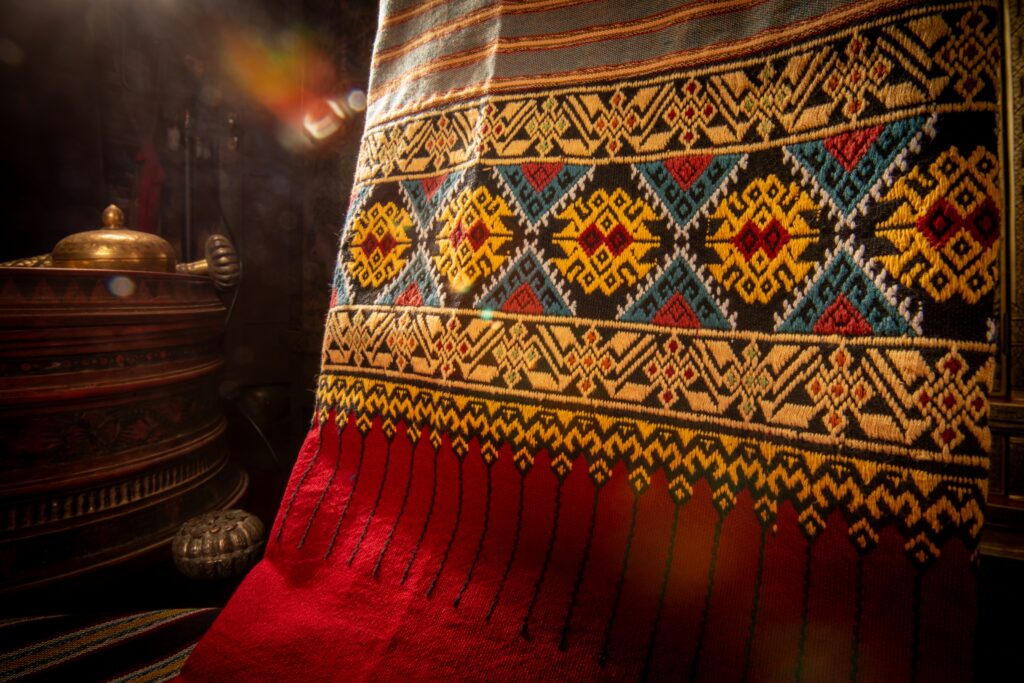
“Müang Li” is an ancient city with a rich history that dates back to the Sukhothai period or even earlier, before 1260 AD. It was under the stewardship of the Lanna Kingdom and later came under Burmese rule (Pagan Kingdom). Throughout its history, Müang Li experienced alternating periods of prosperity and decline, influenced by the governance and policies of each Lanna king. The name Müang Li reappears in historical records during the reign of King Rama I of the Rattanakosin period, mentioned along the route taken by the Siamese army to suppress the Burmese forces in Chiang Mai. In the Rattanakosin period, Müang Li was a city under the jurisdiction of Lamphun. The city’s ruler, known as “Phraya Li”, was appointed by the ruler of Lamphun. The last Phraya Li was “Phraya Khuan Kaew”, and the position was dissolved during the reign of King Rama V.
The people of Müang Li have their own legends and ancient documents that recount the stories of their ancestors and guardians. One such tale is about “Jamari,” the daughter of the ruler of Luang Prabang, who led her people southward to the Lanna region, fleeing from enemies and epidemics. They established a city at Wat Phra That Duang Diao, choosing the location because it was where three rivers—Mäe Li, Mäe Tae, and Mäe Pai—converged, making it geographically ideal. This city was then named Müang Li. In the past, communities were organized based on watersheds. The Chiang Mai-Lamphun plains are characterized by high mountains that stretch continuously, with valleys of different sizes nestled between them. These valleys created natural plains where people established various communities, each separated by the watershed boundaries of the surrounding mountains, both large and small. The mountainous or hilly terrain naturally divided the larger plains into smaller sections, which were referred to as “Long.”
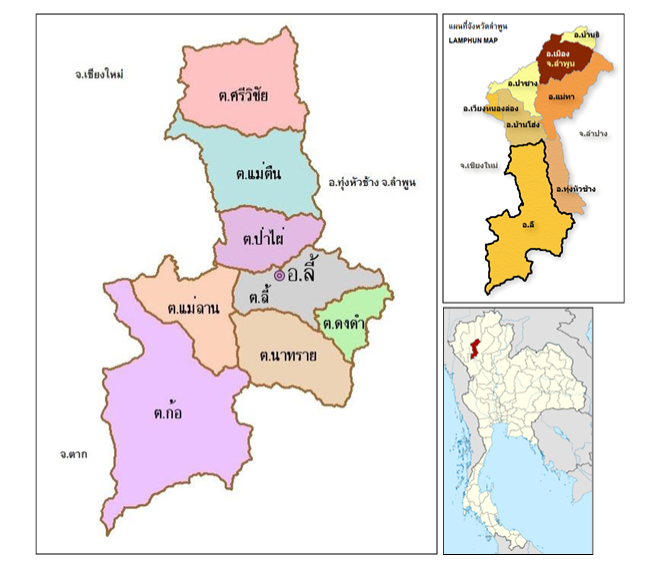
Müang Li is renowned for its distinctive ancient Tin Jok Sinh, known as “Long Li’s Tin Jok,” which showcases unique patterns and colors that reflect the local identity and cultural heritage of the Tai Yuan people from the “Long Li” community in Lamphun Province. This traditional fabric represents the adaptation and transmission of Chiang Saen (Keng T’Sen) weaving techniques over generations, intertwined with the region’s way of life, including nature, agriculture, cultural traditions, local wisdom, and rituals. Villagers, when not engaged in farming, often visit temples for festivals, while housewives hand-weave and sew clothing, drawing inspiration from their surroundings and using the core of the “Ma Phut tree” (Garcinia dulcis; yellow mangosteen) in the dyeing process to enhance the fabric’s unique characteristics.
Müang Li is renowned for its distinctive ancient Tin Jok Sinh, known as “Long Li’s Tin Jok,” which showcases unique patterns and colors that reflect the local identity and cultural heritage of the Tai Yuan people from the “Long Li” community in Lamphun Province. This traditional fabric represents the adaptation and transmission of Chiang Saen (Keng T’Sen) weaving techniques over generations, intertwined with the region’s way of life, including nature, agriculture, cultural traditions, local wisdom, and rituals. Villagers, when not engaged in farming, often visit temples for festivals, while housewives hand-weave and sew clothing, drawing inspiration from their surroundings and using the core of the “Ma Phut tree” (Garcinia dulcis; yellow mangosteen) in the dyeing process to enhance the fabric’s unique characteristics.
Unique and important characteristics
- The Sa Pao of Long Li’s Tin Jok from Lamphun features a T-shaped design in its center, symbolizing the pillar of the community. This shape represents prosperity and wealth, reflecting the city’s cultural significance and its role in the local heritage.
- The Long Li’s Tin Jok pattern of Lamphun is characterized by small, distinctly grouped patterns that are dense, smooth, and visually appealing. This contrasts with the Doi Tao’s Tin Jok fabric, which features larger patterns, and the Mae Jam’s Tin Jok fabric, known for its consistent and continuous designs. Long Li’s Tin Jok is notable for its clearly segmented, intricate patterns, setting it apart from other regional fabrics.
- Green is frequently used as a component color in fabric patterns
- The patterns of Lamphun Long Li’s Tin Jok are divided into two groups as follows:
Standard patterns in Lamphun Long Li’s Tin Jok include the hook pattern, double bird lantern pattern, vegetable fern hook pattern, double bird with swan pattern, chain lantern pattern, turtle scale pattern, plow pattern, double swan lantern pattern, floating lantern pattern, rose cluster pattern, flower bouquet pattern, small diamond lantern pattern, large diamond lantern pattern, and various vegetable fern hook patterns. - Composite patterns in Lamphun Long Li’s Tin Jok include the “Kam Ber La Kang” (large butterfly), the pair of birds with hooks pattern, the “Khao Kham” pattern (vines), the small dog’s fang pattern, the pair of geese pattern, the turtle pattern, the bird playing in pond pattern, the large dog’s fang pattern, the “Kaew Kor” pattern (ruby), the “Kao” pattern (owl), the water lily flower pattern, the pair of birds alternating with “Ton Nam” (water vase), the pair of birds alternating with the legs of “Maeng Kam Pung” (spider), the bird in a rotating cage pattern, and the teal pattern.
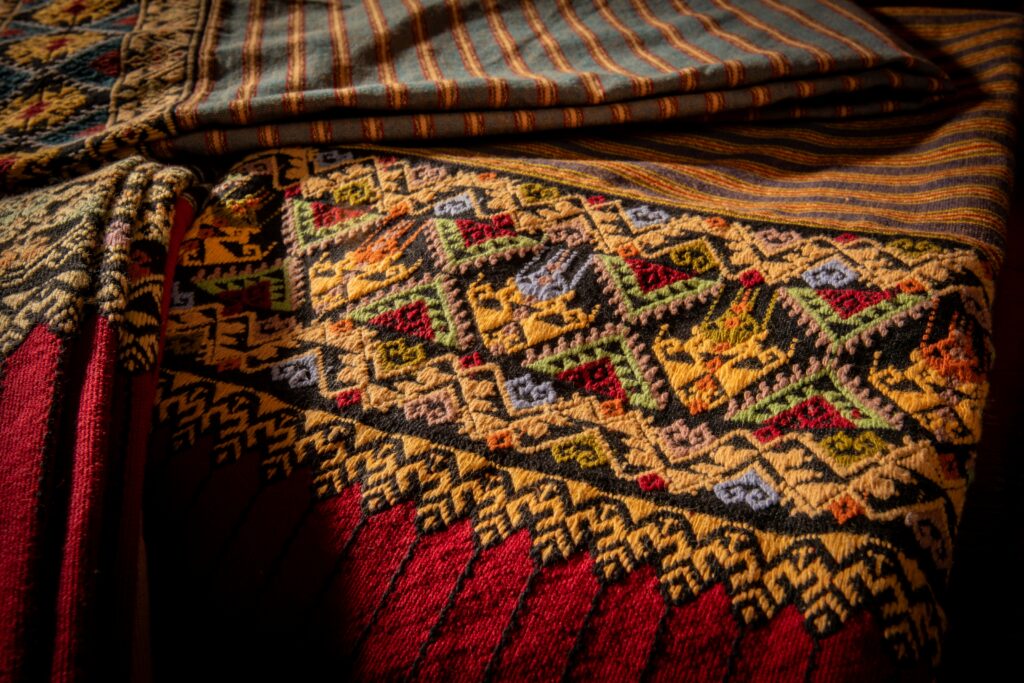
Examining the patterns of the Tin Jok Sinh reveals the intricate details in each line and color, skillfully alternated in every piece crafted by artisans from various communities. A close look at the designs highlights the depth of thought and creativity involved, showcasing both the technical expertise and the innovative thinking of the craftsmen who developed these patterns in their time. The skill to create intricate patterns on Tin Jok Sinh fabric, seamlessly and beautifully on both the front and back, is a testament to the craftsmanship involved. Today, these patterns are preserved in only a few communities across Thailand. They have evolved over many eras, reflecting changes in patterns, materials, and colors.
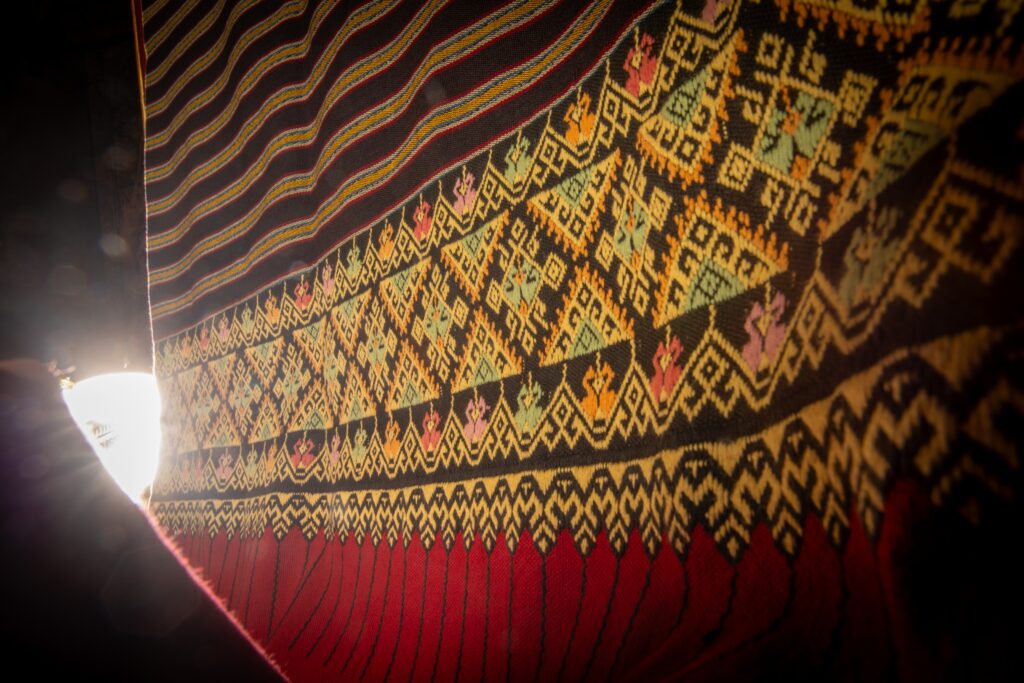
In the Long Li area, Tai Yuan-style bed sheets and pillows featuring the “Long Li Jok Pattern” were traditionally crafted. However, in the 1980s, Tin Jok weaving in the region declined due to its intricate and time-consuming process, which was eventually replaced by faster loom methods. This shift led to the neglect of the ancient wisdom of Jok weaving. In recent times, there has been renewed interest in Long Li’s Tin Jok, recognized for its outstanding beauty and unique identity. The revival of this craft highlights its distinctive qualities and the appreciation of its cultural significance.
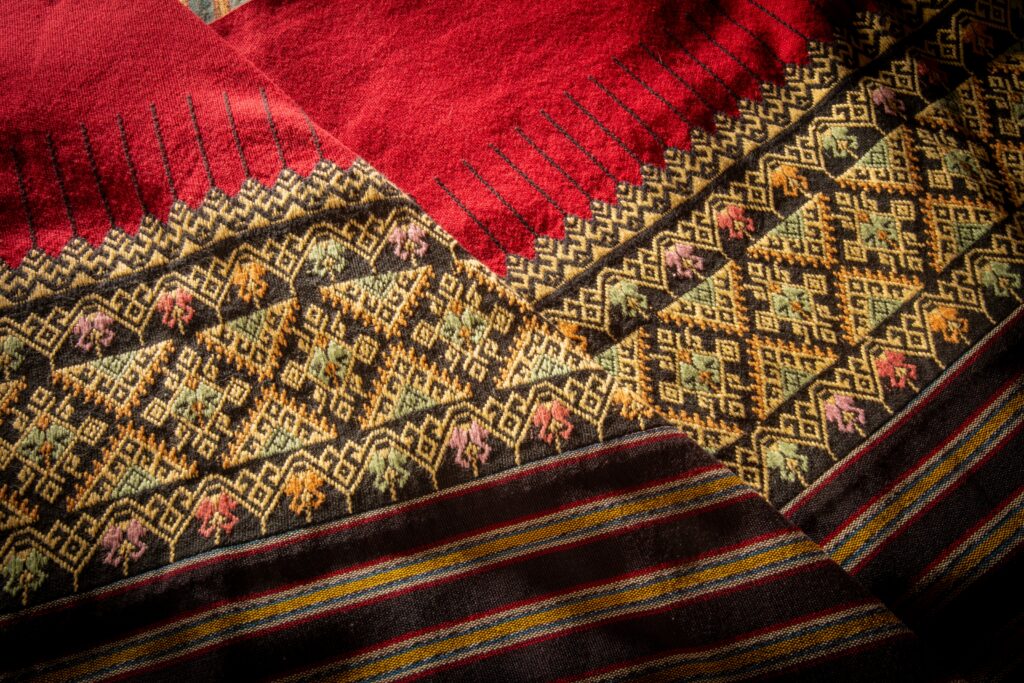
ขอบคุณข้อมูล / เครดิตบางส่วน กรมทรัพย์สินทางปัญญา กระทรวงพาณิชย์
An author assistant Nonthawat Ningjaiyen
TRULY THAI AUTHENTIC YOU CAN BE
>>ติดตามเรื่องราวความเป็นไทยอย่างใกล้ชิดที่ Thai Style Studio<<
เพราะเราเชื่อว่า “มากกว่าความรู้สึก คือ การได้สัมผัสประสบการณ์ความเป็นไทยด้วยตัวคุณเอง”
